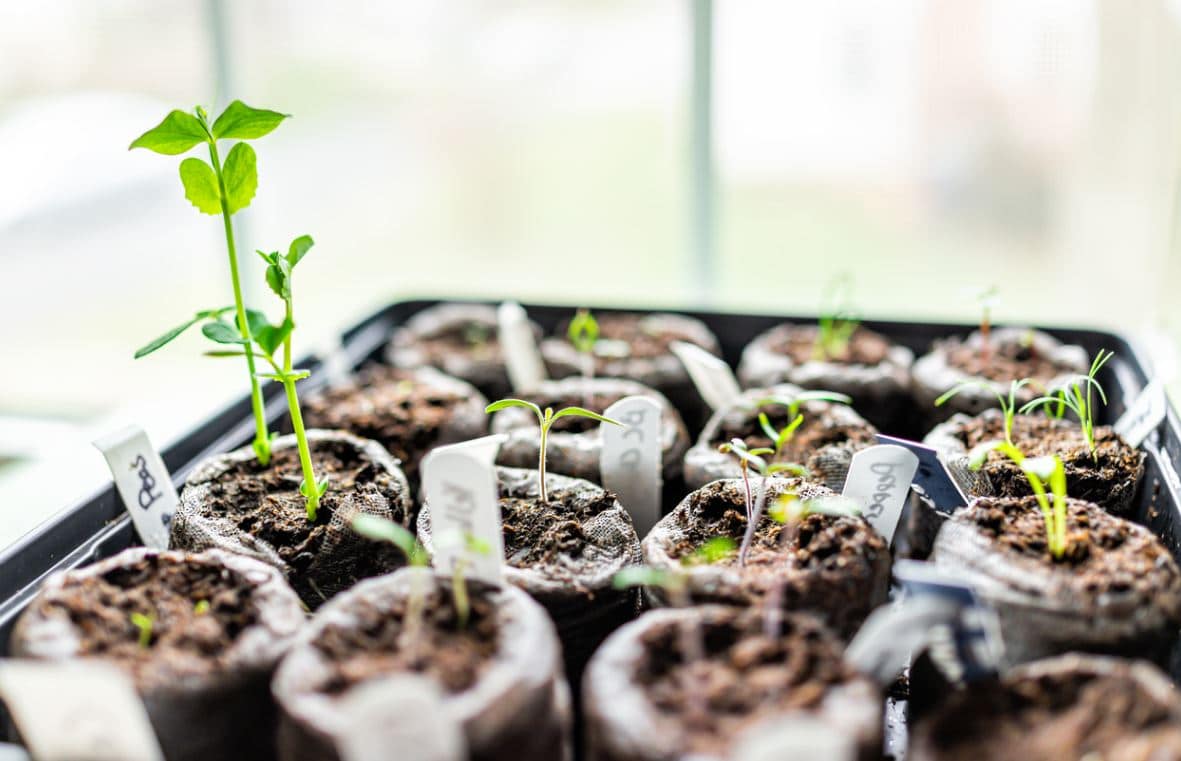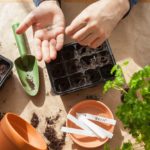It is one of the most widely used multiplication methods; it is suitable for annuals and, in general, biennials, some perennials and some species of bulbous and woody plants.
Requirements for sowing
The seeds must, as the case may be:
- Either be sown immediately after harvest as for certain species of the family Iridaceae and Liliaceae;
- Either, most often, be sown in the year following the harvest. In this case, they may require, in the case of seeds with a hard shell – or tegument -, preparation operations: soaking (in lukewarm water), shelling or stratification which must be carried out in sand or slightly damp peat, at a low temperature (10 ° to 12 ° C).
Some seeds must be kept in the dark and be covered, when sowing, with a thick layer of soil. This is the case for some species of the genus Phlox.
Main categories of seedlings
Whether sowing practiced in place (or permanent sowing) or seedlings in the nursery – which is intended to produce plants which will then be transferred – sowing can be done in three ways: broadcast, in rows, in pockets.
Broadcast sowing
In this type of seedling – used mainly for sowing in the nursery – the seeds must be distributed as evenly as possible over the entire surface of the soil and then be buried lightly with a sharp-toothed instrument scratching the soil in all directions in a back and forth motion: a metal fork can do this when the area to be sown is small .
When the seeds are particularly thin (for species belonging to the genus Digitalis for example), their dissemination can be carried out by means of a business card folded into a gutter. It is therefore recommended to mix fine sand with the cultivation soil, so that the seed dispersal can be carried out regularly on the entire surface.
Row sowing
This type of seedling, also called seedlings in combs, is reserved for seeds of a certain size, like for example those of Lathyrus odoratus (sweet pea).
It consists of placing the seeds in shallow rays one after the other, without overlap and without them touching.
The combs must be all the more apart as the sown species will have a greater development and all the more deep as the seeds are larger.
After sowing, we must fill each ray with the earth extracted from each digging, then cover with a light layer of potting soil.
Sowing in pockets
It is reserved for large seeds, these being arranged in groups of three to ten, according to their size, in small holes dug by hand and filled in the same way as for sowing in rows, while leaving small pits to facilitate watering.
Sowing in pockets makes it possible to obtain compact multiplication tufts and can be practiced both in the ground and in pots; in the latter case, we will obtain very full flower pots.

The practice of sowing
Depending on the case, the seeds can be sown:
· in the ground (or outdoors), when it comes to hardy species for patio plants and, sometimes, for balcony plants;
· AT the shelter (under glass, in particular), for seeds with difficult germination or when you want to obtain early sowing; in this case, sowing is usually carried out in a terrine or in a pot; this formula, moreover, is required for very fine or intangible seeds.
So that germination can be carried out in good conditions, it is recommended:
To practice sowing by average temperatures of 15 to 18 ° C, both for balcony plants and for terrace plants;
To place the fine or impalpable seeds (begonias and petunias, for example) on the cultivated soil without covering them or by covering them only very lightly with fine soil or potting soil. When the sowing is done in terrine or pot, protect the seeds with a sheet of glass until the emergence is complete;
· To insert the flat seeds vertically (for example: those of species belonging to the genus cobaea), to reduce the risk of rot;
· To cover the seeds sown in the ground, according to the nature of the soil and their size, by two or three times at most their thickness of fine earth or, better, of compost.
Whatever the mode, the sowing must, until emergence, be maintained in a state of constant humidity, but without exaggeration, which can only be easily achieved for sowing very fine or intangible seeds by soaking periodically from the seedling container in water, up to the level of the cultivation soil, so that it can soak up by capillary action.
Read also :









